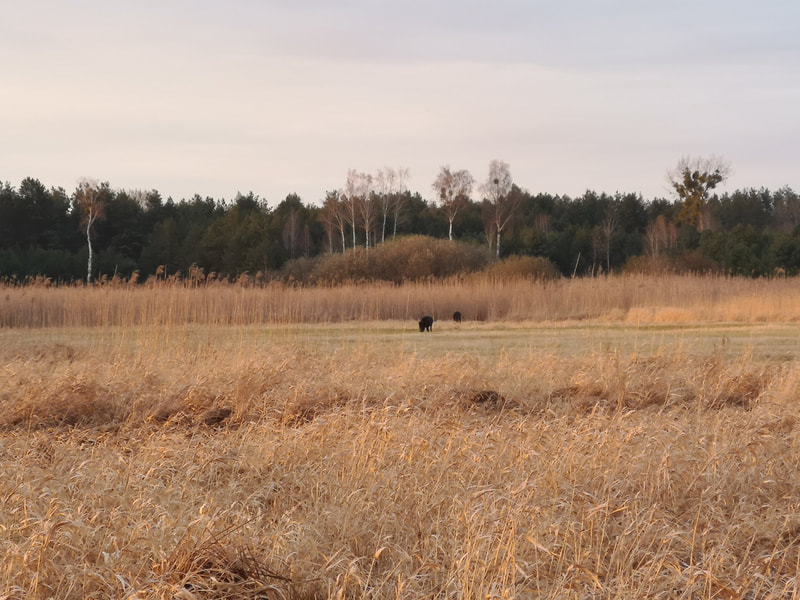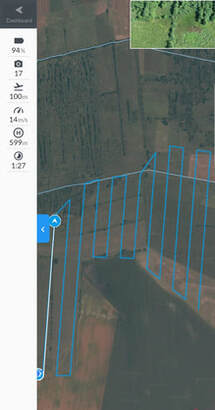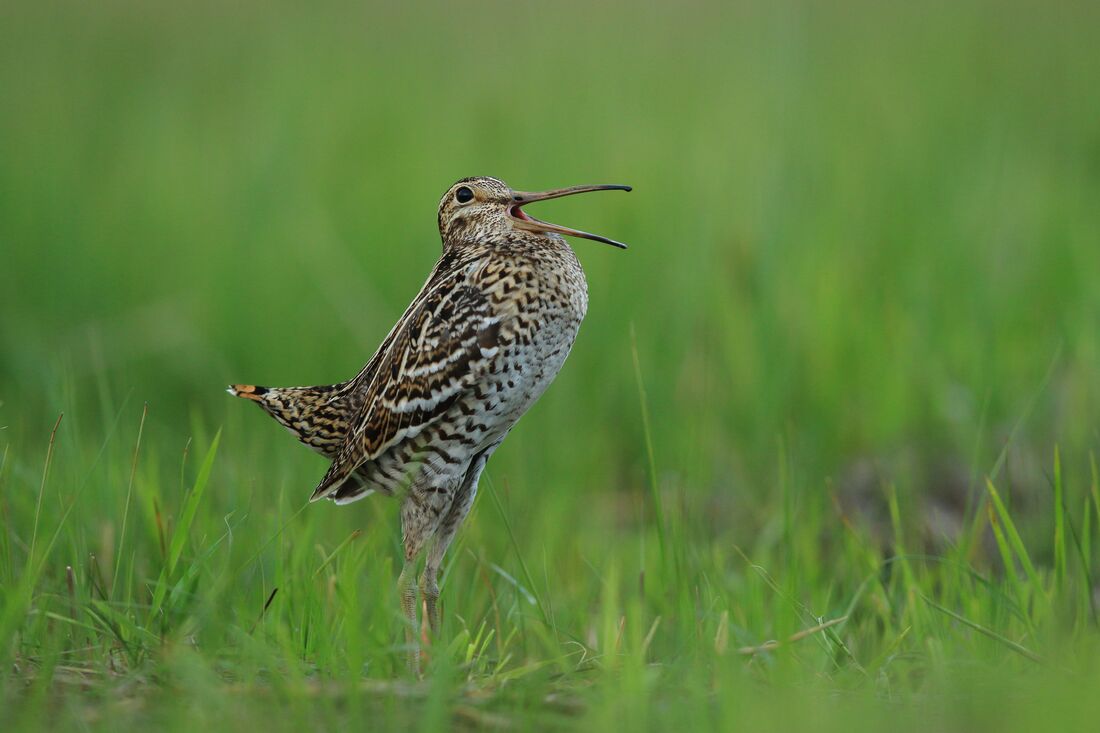|
The beautiful night no doubt amazed one of our volunteers - Tomek Kobulas when he was taking the footage of one of the leks in Lublin region using thermo vision camera. You can judge for yourself.
0 Komentarze
As part of the LIFE project for the implementation of the National Action Plan for Great Snipe, we are searching for leks in all potential protected areas in the country. The flood plains of large river valleys are one of the favourite Great Snipe landscape habitats in Poland. Unfortunately, due to the less frequent spring floods, this is a landscape in which Great Snipes are doing least well. Together with the Mazowsze Great Snipe Team (in the squad of Krzysztof Antczak, Marek Murawski, Marek Twardowski, and Rafał Wyszyński) we were looking for leks in the Lower Bug Valley in the area of Wyszków. In one weekend night, we found only two places with single males, Krzysiek listened out one les and the other was "trampled" during the day by our Fieldwork Coordinator - Michał Korniluk. So far, the Mazowsze team has located four areas with Great Snipes in Lower Bug Valley. Photo. Rafał Wyszyński and Michał Korniluk
Are you fed up with the constant flood of news about the pandemic? You can't go out or are afraid of the dark? We invite you to watch great snipes live from 18:00 to 7:00. During the day, cameras are switched off.
Attention now! New promotion. You'll get a design project t-shirt for each fox you see. All you have to do is send a print screen, day and time of observation to info@natura-international.org.pl. And, of course, sex and size of the t-shirt. All additional information about great snipe behaviour will be greatly appreciated. Have a nice watch!
Cam 1: Lublin region
Cam 2: Podlasie region
First great snipes are mating nicely in Podlasie region. On 13 April, at one of the project’s leks located in the Upper Narew Valley, Michał Korniluk found the first seven mating males this year. Hereby, we consider the 2020 great snipe season as open! Keep your fingers crossed for the rain (it is dry in the great snipe habitats like never before) and for the implementation of the project’s actions aiming at preventing water shortage at the main great snipe lekking sites, which we will keep you updated on due course. One of the project's actions is to cooperate with agri-environmental advisors and farmers in order to adapt the agricultural management to the developed land use models for great snipe in key lek areas. On February 28, 2020, we delivered the first of the planned trainings for advisors preparing ornithological documentation for the agri-environment-climate schemes in the 2014-2020 financial perspective. The training aimed at pointing out which details and requirements can be introduced by experts in ornithological documentation in order to better adapt agricultural use to the habitat requirements of the great snipe. The meeting took place at the Agricultural Advisory Centre in Brwinów with over 80 participants.
The construction of a permanent fence is underway at two great snipe sites in Lublin region, which will soon allow the introduction of grazing animals. At the first of the sites, which includes an active lek located within Szyszła River Valley Natura 2000 site, almost 9 kilometres of fence are built, additionally equipped with a set of electrifiers, preventing damaging the fence by animals. Further 3165 meters of the fence is being built near the village of Olchowiec in Puszcza Solska Natura 2000 site on a historic great snipe lek, probably abandoned as a result of land abandonment.
Grazing provides birds with a mosaic of habitats and, compared with early mowing, increases the chance of nest and chick survival. Grazing animals create thousands of microhabitats rather than a compact uniform turf through browsing and trampling of dense dead vegetation, which would not be available despite of the seemingly appropriate type of plant community. In mineral soils, grazing also has a positive effect on the density of earthworms in the soil, which are the main food of the great snipe. Grazing animals also have a function to deter potential predators, which can affect the breeding success of the great snipe. Such a relationship was observed, e.g. for lapwing, black-tailed godwit and redshank, where the probability of predator destruction of nests was significantly lower in intensively grazed areas.
In June, we made the first aerial maps of habitats within four selected leks in Podlasie and Lublin regions. To this end, we sent our regional coordinators – Paweł and Michał to a drone flying course and exam, which they surprisingly completed with a satisfactory result. Then, with the help of these clever devices (DJI Mavic 2 Pro), we flew over the meadows where great snipes occur. Drones took hundreds of photos at that time, which in turn enabled us to create the most current map of habitats within the lek areas. This is a very important task in protecting this amazing bird. In this way, we obtained valuable material that will allow us to plan the best protection, e.g. reach the owners of the plots in attempt to modify the management in this area. Next year - when we supply the birds with GPS transmitters - we will learn more about the habitat preferences of great snipes.
|
Projekt „Implementacja Krajowego Programu Ochrony Dubelta – etap I” LIFEGALLINAGO ACTION PLAN współfinansowany jest przez Unię Europejską w ramach Instrumentu Finansowego LIFE (nr umowy LIFE17 NAT/PL/000015) oraz przez Narodowy Fundusz Ochrony Środowiska i Gospodarki Wodnej (nr umowy 266/2018/Wn50/OP-WK/LF/D)
The project "Implementation of the National Action Plan for Great Snipe - stage I" LIFEGALLINAGO ACTION PLAN is co-financed by the European Union under the LIFE Financial Instrument (contract number LIFE17 NAT/PL/000015) and by the National Fund for Environmental Protection and Water Management (contract number 266/2018/Wn50/OP-WK/LF/D)















